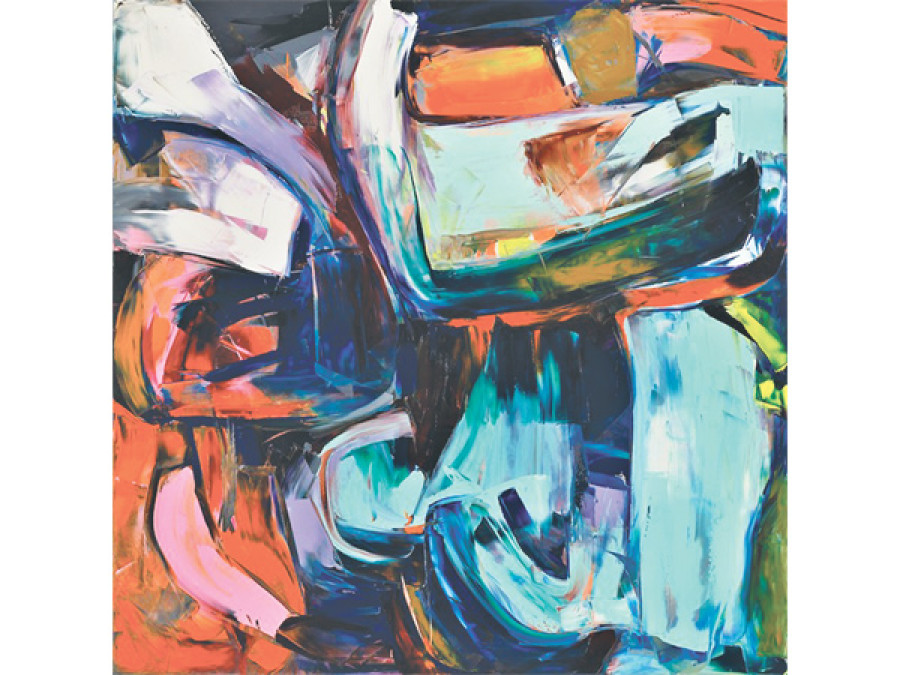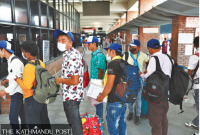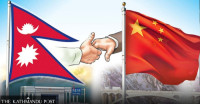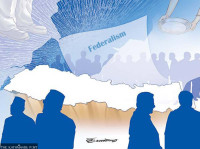Opinion
Historical ties
How do regional politicians and scholars look at the history of Nepal in postcolonial South Asia?
Our English department at the university in corporated South Asia studies in its interdisciplinary graduate courses only recently. The reasons are obvious. The study of South Asia is an amorphous subject for people pursuing different modes and methods of learning. It has however, been successfully pursued by the classicists, folklorists, musicians, artists, philosophers, gurus and Sadhus insofar as it concerns Nepal’s sharing of these features with its immediate neighbour India. Some of the areas are vibrant despite being old. Faith occupies an important place because it is buttressed by believers and politicians who want some form of religion-oriented polity to emerge and stay in power.
Given the recent developments in Nepal’s politics and the historic promulgation of the new constitution, people who wanted Nepal to retain its erstwhile status as a Hindu state, made their voice heard. Some did so in a proper manner in the legislature like Kamal Thapa, and others did so in a bizarre way by accentuating Nepal’s magic-religious order. One example of this is the lobbying by some Nepali spiritual gurus and followers who were in India over a month ago as reported by Devendra Bhattarai from New Delhi. A guru claimed that the devastating April 25 was caused by the actions of the apostates; the people who had vowed to turn Nepal into a secular state.
Religious influences
Returning back to the incorporation of South Asia studies in the graduate courses, it was heuristically, chronologically and topically organised. The package contained theories, analyses and texts written by scholars, covering all South Asian countries.
I feel that the academic agenda of South Asia studies is at odds with the stress that Nepal has experienced in recent times. Some modes of pressure are obvious, whereas others are indirect in nature. What I find intriguing is the way people have chosen to create religious, psychological and ideological influence at this very juncture of Nepali history. The Hindu and Christian ideologues appear to be creating their respective contact zones here. The Hindus say that they are not seeking to influence anyone but only trying to retain what has always been here. As a result, Nepal is bearing the brunt of a psycho-religious and ideological dialectics. But that is of secondary importance at this stage.
Nepal wants to implement the first ever people’s constitution of the land by reaching an agreementwith the parties and groups who feel this constitution does not represent their interest, and making this acceptable to all. That is Nepal’s need and top priority now. And I am a supporter of the rightful demands of the agitating people; I have also written in support of them.
Traumatic space
To return to South Asia studies,the spread of cultural and artistic experiences and multiple achievements of the people in this region have created a strong bond among the people. Such a bond has been captured in manuscripts, carvings and paintings. It is created in architectonic sites including Asian baroques. Different phases of history show different varied sharing of experiences. Postcolonial arguments show a different order of history. Nepal’s relationship with the British Raj featured in the syllabus is a somewhat ambivalent subject. As Nepal remained outside of the direct rule of the British, it has given rise to a number of interpretations. The 19thcentury French anthropologist Sylvan Levi said that ‘Nepal is a miniature India’, by which he meant South Asia. Meanwhile, a Nepali historian Yogesh Raj Mishra has developed a very different view of historiographical study.
In later times, the sharing of historical experience among South Asian countries meant the sharing of trauma. Nepal did not experience the ordeal experienced by India and Pakistan, and later by the Bangladesh during partition. Did the Indian leaders, Jawaharlal Nehru and his comrades, see Nepal as the only zone that was outside the historical traumatic space and experience and, as said by Sylvan Levi retaining the features of a civilisation that could assuage the pain of the traumatic experience? I stumbled upon some other points of discussion while writing a play based on the life and works of the late Bishweshwar Prasad Koirala, alias Sandaju, staged in Kathmandu. Koirala fought for Indian freedom from the British rule. And soon after, Nepalis achieved freedom from the 104 years of Rana oligarchy in 1950.
Outsider’s view
I would like to reiterate some points that I made on trauma at a South Asian Literary Festival in February 2014. I said, “We can develop a positive perception of reconciliation not by promoting political pleasantries or spreading propaganda, nor by considering trauma as the embedded karmic or spectral reality or a ‘hauntology’ that grips the historical psyche, but by looking from the strong position of involved distance. I do not consider that the karmic situation holds the truth. There is no reason to push the psychological meaning by considering the nation states as symbolic entities and the history as a permanent spectral and haunted temporal narrative. The evidence of salvation, of mutual dialogues can be seen in the sharing of the heritage of arts and literature in the region. Nepal’s non-involved experience in such trauma history and psyche is an important reminder of the fact that though ‘reconciliation’ may sound like a cliché, it represents a reality that transcends historico-political determinism and ‘hauntology’ of history of this region.”
The difficult week experienced by Nepal propels this inquisition. I wonder if the aforementioned post-colonial experience still holds vis-à-vis India. Do the Indian leaders, especially the new statesmen, also view the Nepal as a relief zone, or look at Nepal as a beleaguered land hemmed in by big neighbours, now struggling to overcome the earthquake calamity and stabilising the political structure of the land? I would end like to end on this note which stems from my desire to know how Indian and regional politicians and scholars look at the history of Nepal in the postcolonial South Asian context.




 17.12°C Kathmandu
17.12°C Kathmandu









